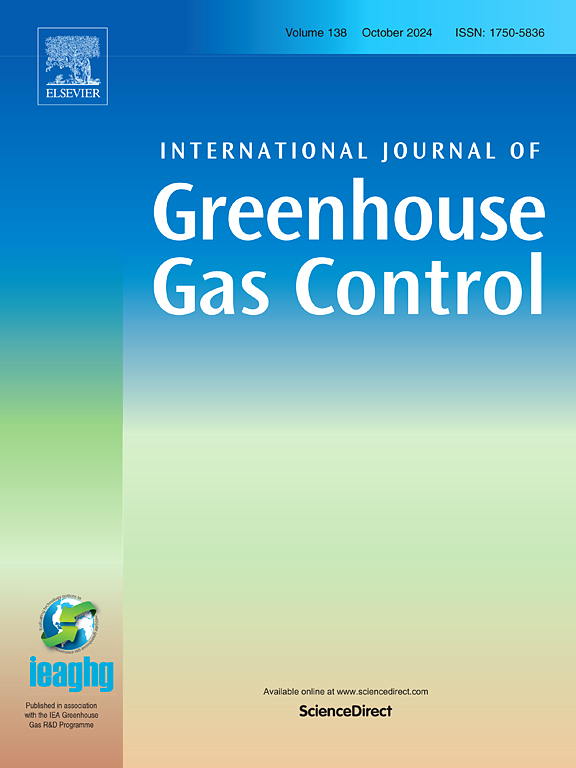Determining the dominant factors controlling mineralization in three-dimensional fracture networks
IF 5.2
3区 工程技术
Q2 ENERGY & FUELS
International Journal of Greenhouse Gas Control
Pub Date : 2024-11-06
DOI:10.1016/j.ijggc.2024.104265
引用次数: 0
Abstract
One methodology to reduce CO in the atmosphere is inject it into subsurface systems where the ambient conditions are favorable for the carbon to precipitate/mineralize thereby permanently trapping it. Prospective host rocks are relatively impermeable when intact, so the flow of fluids and associated reactive transport therein primarily occurs within and through interconnected fracture networks that provide lower hydraulic resistance. Although critically important for the success of carbon mineralization, the characterization of the interplay between network geostructure, geochemical reactions, and hydrology on the total extent of mineralization is poorly understood. To this end, a set of reactive transport simulations modeling coupled dissolution and precipitation under a variety for hydrological and geochemical conditions are performed to characterize their impact on mineralization in three-dimensional fractured media. The generated data set is used to perform a robust sensitivity analysis and characterize how model parameters, as well as the network structure, affect the total amount of precipitated mineral. It is observed that the reaction rate constant of gypsum, the volume of the network, the incoming volumetric flow rate, and initial porosity showed the strongest impact on the maximum amount of mineralization in the system throughout the simulations.
确定控制三维断裂网络矿化的主要因素
减少大气中二氧化碳含量的一种方法是将其注入地下系统,在地下系统中,环境条件有利于碳的沉淀/矿化,从而将其永久封存。远景主岩在完好的情况下相对不透水,因此其中的流体流动和相关的反应性迁移主要发生在提供较低水力阻力的相互连接的断裂网络中或通过断裂网络进行。尽管网络地质结构、地球化学反应和水文之间的相互作用对碳矿化的成功至关重要,但人们对其对矿化总范围的影响还知之甚少。为此,我们进行了一组反应传输模拟,模拟了各种水文和地球化学条件下的耦合溶解和沉淀,以确定它们对三维断裂介质中矿化的影响。生成的数据集用于进行稳健的敏感性分析,并确定模型参数和网络结构如何影响沉淀矿物的总量。结果表明,在整个模拟过程中,石膏的反应速率常数、网络体积、流入体积流量和初始孔隙度对系统中最大矿化量的影响最大。
本文章由计算机程序翻译,如有差异,请以英文原文为准。
求助全文
约1分钟内获得全文
求助全文
来源期刊
CiteScore
9.20
自引率
10.30%
发文量
199
审稿时长
4.8 months
期刊介绍:
The International Journal of Greenhouse Gas Control is a peer reviewed journal focusing on scientific and engineering developments in greenhouse gas control through capture and storage at large stationary emitters in the power sector and in other major resource, manufacturing and production industries. The Journal covers all greenhouse gas emissions within the power and industrial sectors, and comprises both technical and non-technical related literature in one volume. Original research, review and comments papers are included.

 求助内容:
求助内容: 应助结果提醒方式:
应助结果提醒方式:


